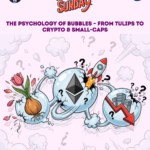By Kanika Lungani
Edited by Vinayak Prabhu
Abstract
The purpose of this paper is to compare the accuracy of betas by means of comparison of performance ex-post facto. Betas are projected on a monthly basis for few of the available sectorial NSE indices that have data available for the period 2001 – 2015 and are highly liquid in nature. The indices chosen for the study are – NIFTY IT, NIFTY BANK, NIFTY FMCG, NIFTY PHARMA, NIFTY ENERGY and NIFTY 500. By means of this paper, I aim to do a comparative study on the Indian markets following the footsteps of Didier Marti as he did in his paper “The accuracy of time-varying betas and the cross-section of stock returns” (2005).
The beta computation techniques considered are the rolling regressions, GARCH models, the BLUME’s method, AR (1) or ARMA model and an ASYM- METRIC beta model. It appears that in times-series tests, Blume’s method along with asymmetric beta estimation model provide the closest estimates in mirroring the actual asset behavior.
Introduction
The basic underlying model used very commonly is the market model. The equation for the same is given below:
![]()
The dependence of individual asset return on market return is undeniable. But the problem faced by most of these modeling techniques is that they are based on historical data. Yet, when we design our portfolios the idea of future returns and volatilities is sacrosanct. These figures cannot be obtained from historical data. Forward looking reliable data is needed to make reliable future estimates; and to do this, an accurate beta is needed to map the individual returns correctly.
In this study, to get a holistic representation of the market, the market data is taken from Prof. Jayanth Verma’s blog where the adjusted and cleaned return of the true (entire) market are available. This true representation of the market en- ables us to capture true results.
Techniques
1. Rolling regression
This model is based on the assumption that betas remain constant over a short period, generally 5 years. Here, a window size of 60 observations is set for regression (market model) and for each new beta the window slides down by 1 observation, i.e. it takes in the consequent new observation and leaves out the oldest observation. Therefore, only 1 observation in each regression (on 60 observations) is new.
2. Blume’s Method (Adjusted Beta)
A simple and easy empirical model developed at JPMC tries to project new beta using the past beta using the following equation.
![]()
The slope and the intercept for this model have been ascertained using empirical study in the American markets.
Often ridiculed for being static and too simple, the model lacks a suitable explanation to gain acknowledgment as a credible beta estimation model in the world of capital markets. Another drawback associated with it is that it always this model will always regress the beta of the asset to ‘1’.
3. AR (1) or ARMA Model
AR (1) model or autoregressive process of order one, “is a linear time-series process used in statistics to capture dynamics”[5]. The model assumes that future values can depend on current and past values using linear approximations. Specifically, the AR(1) model is effective in its parsimonious usage of linear estimation and its ability to produce forecast results in line with more complex forecasting models.
Here the betas are determined using the following equation:
![]()
Here á1 is an autoregressive constant.
4. GARCH (1,1)
Market model lacks the capability to adjust for the bias (in estimating the equation using OLS) that arises out of errors that are not normally distributed. A GARCH (1, 1) model helps overcome this shortcoming of the market model. This model may be represented as:

The beta is estimated using the following equation:

5. Asymmetric Model
This model was proposed and developed by FABOZZI and FRANCIS (1977). It is based on the idea that the beta of stocks or portfolios could be influenced by the state of the market. The beta is computed as:

Here Dt is a dummy variable that accounts for the direction of market movement.

The coefficient beta1i measures the differential effect of an upward movement in the market on the beta. With this beta specification, the market model can be redefined as:
![]()
Since the focus of this paper is on ex-post facto performance comparison, D has to be a forward-looking value. To determine D an AR (1) model was ran on the first 60 market return observations to get forward-looking returns. From these estimated returns the value of D was determined.
Since only the direction of the market movement was needed (up or down) AR (1) seemed like a fairly good method to determine that.
The above-listed techniques help determine the betas and draw a comparison. But to measure the result as returns, individual asset returns are forecasted from the available post period market return; and then used for comparison.

As can be observed from the table and charts that, AR (1) or ARMA model and asymmetric model project betas closest to the actual betas despite a small sample; amongst the methods chosen for study. However to measure the effectiveness and accuracy of these betas returns derived using these betas must be studied to make an acceptable argument.


From the table given above it is apparent that Asymmetric Beta estimation technique and Blume’s method come closest in provide accurate asset returns compared to other techniques.
Results:
A comparative result of the paper can be listed as:

Inference:
In spite of a small sample these results can be expected to hold true in other scenarios as well. Since, both of these techniques rely on using immediate past data market moment in asymmetric modeling and the last actual beta in Blume’s method – to project the next value or beta it is apparent that they capture immediate or recent market direction.
One of the decided and accepted style facts as presented by Rama Cont (2000) – was “Volatility Clustering”. Roughly, it means that bad events and good events tend to happen together. This is generally caught by using recent past data in determining the new risk or return of the asset. Therefore, it can be said that these two techniques – Asymmetric and Blume’s – might indeed be the most efficient ones in the chose techniques under study.
Conclusion:
In this study to ascertain which model out of the ones under study – Rolling Regression, AR (1), Asymmetric Beta Technique, Blume’s Method and GARCH (1, 1) method – generates the most reliable forward-looking beta for usage in Indian markets.
Despite having a small sample under study, on the basis of stylized facts of volatility clustering, a supporting argument can be made in favor of the result obtained. From the analysis done, it can be said that Blume’s methods and Asym- metric methods are the most effective and reliable as they provide returns closest to the actual observed returns.
References
“The Accuracy of Time-Varying Betas and the Cross-Section of Stock Returns” Didier Marti (2005)
“Heteroskedasticity in Stock Returns” By G. William Schwert and Paul J. Seguin (1990)
“Empirical Properties Of Asset Returns: Stylized Facts and Statistical Issues” Rama Cont (2000)
“Betas and Their Regression Tendencies” Marshall E. Blume (1975)
“Time-Varying Beta: The Heterogeneous Autoregressive Beta Model” Kunal Jain (2011)

About the author:
The author was a PGDM finance student of the batch 2014-16 at TAPMI. Her area of interest is economic research, stock picking, and business valuation. You can contact her at kanikalungani@gmail.com.

















Leave a comment